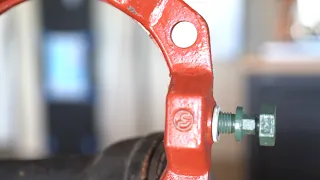Curious about what really happens when you pour a powerful drain cleaner down your plumbing system? In this post, we experiment with a sulfuric acid–based cleaner to see how it affects various pipe materials. This particular drain cleaner is banned in many places, but similar ones exist on the market. After a 30-day test, you will see exactly which materials are at the biggest risk.
The Setup
- Chemical Used: A sulfuric acid drain cleaner called Clean Out (now banned in most areas).
- Test Duration: 30 days of submersion.
- Materials Submerged:
- Corrugated tubing (flexible plastic)
- Rubber hose
- Schedule 10 PVC
- Schedule 40 PVC
- ABS pipe
- Copper pipe
- Galvanized/Black Iron Nipples
- 17-gauge P-trap (Copper/Brass)
- Cast Iron pipe
Key Observations
- Corrugated Tubing (Flexible Plastic): No visible damage or brittleness after 30 days.
- Rubber Hose: Still firm and intact. No major signs of deterioration.
- Schedule 10 and Schedule 40 PVC: Both look unaffected. However, there was slight discoloration in the glue area, suggesting prolonged contact might compromise the fitting’s chemical bond over time.
- ABS Pipe: This was the most striking result. The acid dissolved or severely degraded a section of the ABS pipe, leaving behind black residue and partial fragments. Anyone with ABS drain lines should exercise extreme caution using any sulfuric acid–based cleaner.
- Copper Pipe (Thin-Wall and P-Trap): The outer finish and coatings were stripped, but the core copper/brass remained structurally sound. The surface had a warm feel and a film that suggested some chemical reaction but no complete failure.
- Galvanized or Black Iron Nipples: These emerged looking “cleaned” rather than damaged, though the protective coating was stripped. The surface turned rough, but no complete breakdown.
- Cast Iron Pipe: It had a coating that peeled off, leaving an odd, gel-like film. Structurally, it remained intact, but the chemical definitely removed its protective layer.
Biggest Problem: ABS Pipe
The standout issue was the ABS piping. In just 30 days, the sulfuric acid essentially disintegrated it. If you have ABS pipes, a chemical like this can stay trapped in a belly or low spot in the drain, continually attacking the material. This could lead to cracks, holes, or a full rupture.
What This Means for Homeowners
- Read Labels Carefully: Always check whether your pipe material is compatible with a given chemical.
- Belly in Your Drain: Heavier chemicals can pool in a sag or low spot, causing prolonged exposure.
- Use Alternative Methods: Sometimes, mechanical tools like plungers, augers, or hydro jets are safer.
- Professional Advice: If you suspect serious clogs or unusual pipe materials, consult a licensed plumber to avoid catastrophic damage.
Conclusion
Although certain sulfuric acid drain cleaners may promise quick fixes, our test shows they can completely destroy ABS pipes and heavily strip coatings from metals. While PVC and some metals might survive better, there is still a risk of future leaks or weakened joints. Always handle drain chemicals with caution, follow the directions, and consider professional help for persistent clogs.




